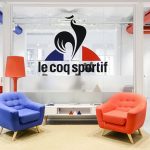Quiksilver, entered into an acquisition agreement with the Boix-Vives family and SDI Société de Services et Développement, a Swiss corporation, to purchase from the Sellers a majority holding of Skis Rossignol in exchange for cash and shares of common stock of ZQK, subject to conditions.
The Company announced its planned acquisition of Skis Rossignol in a press release issued on March 22, 2005, filed as Exhibit 99.1 to its Form 8-K filed on March 23, 2005.
Pursuant to the Acquisition Agreement, on the Signing Date the Company effectively became sole general partner and manager of Ski Expansion, a French general partnership limited with shares. This Holding Company directly and indirectly owns 4,784,979 common shares of Skis Rossignol, representing 38.43% of the shares and 49.84% of the voting rights of Skis Rossignol as of April 4, 2005. Also on the Signing Date, those Controlling Shareholders who had been general partners and managers of the Holding Company withdrew as general partners and resigned as managers of the Holding Company.
Also pursuant to the Acquisition Agreement, upon the earlier of the date of settlement-delivery of the tender offer for the publicly held shares of Skis Rossignol contemplated by the Acquisition Agreement, and July 19, 2005, subject to regulatory approvals:
- the Company will acquire from the Sellers an aggregate of 361,989 common shares of the Holding Company;
- Skis Rossignol, which will then be controlled by the Company, will acquire from the Sellers all shares of Skis Rossignol's subsidiaries held by the Sellers (other than shares of Roger Cleveland Golf Company, Inc., a California corporation (“Roger Cleveland”));
- the Controlling Shareholders will transfer 749,958 shares of Skis Rossignol (the “Residual Shares”) which they own directly to the Holding Company; and
- the Holding Company will issue new shares to the Controlling Shareholders, and the Controlling Shareholders will transfer to the Company 76,518 common shares of the Holding Company acquired pursuant to this capital increase.
As a result of the foregoing transactions, on the Closing Date the Company will own 100% of the common shares of the Holding Company and the Holding Company will own 44.46% of the share capital of Skis Rossignol. The Controlling Shareholders will retain an interest in the Holding Company in the form of 146,167 restricted shares representing 25% of the share capital of the Holding Company to secure the payment of the purchase price of the shares of the Holding Company by the Company pursuant to the Acquisition Agreement.
The Acquisition Agreement contemplates that the shares in the Holding Company retained by the Controlling Shareholders will be transferred to the Company within five years of the Signing Date through a series of put options held by the Controlling Shareholders and call options held by the Company set forth in a shareholders' agreement, dated April 12, 2005, between the Company and the Controlling Shareholders (the “Holding Company Shareholders' Agreement”). The Holding Company shares retained by the Controlling Shareholders will be pledged for the benefit of the Company to secure the call options held by the Company.
The Company will pay to the Sellers 181.20 per Holding Company common share, subject to adjustment based upon the net cash position of the Holding Company as of the Signing Date, to be paid 70% in cash and 30% in shares of common stock of the Company to be issued by the Company based upon the closing price of $28.99 per share on the New York Stock Exchange on April 12, 2005, which would represent approximately 1,075,000 shares of the Company's common stock. . . .
On April 12, 2005, the Company terminated the Credit Agreement, dated as of June 27, 2003, among the Company, certain of its subsidiaries, JPMorgan, as administrative agent, Union Bank of California, N.A., as syndication agent and joint lead arranger, Fleet National Bank and Bank of America, N.A., as syndication agents, U.S. Bank National Association, as documentation agent, and J.P. Morgan Securities, Inc., as sole bookrunner and joint lead arranger (the “Terminated Facility”). This Credit Agreement provided for a $200 million revolving line of credit secured by the Company's U.S. assets, other than trademarks and other intellectual property, and included a $75 million sublimit for letters of credit. The interest rate on borrowings was determined, at the Company's option, as either: (i) an adjusted LIBO rate plus a spread of 1.125% to 1.5% or (ii) the higher of the prime rate, the three months certificate of deposit rate plus 1% or the federal funds effective rate plus 0.5%. The margins over the LIBO rates were based upon the Company's leverage ratio.
Some of the lenders, and certain of their affiliates, under the Terminated Facility perform various financial advisory, investment banking and commercial banking services for the Company and its subsidiaries (including Quiksilver Americas, Inc.), for which they receive usual and customary fees.
Simultaneous with the termination of this Credit Agreement, the Company entered into the credit agreements described in Item 1.01 of this Current Report on Form 8-K.
Item 2.03 Creation of a Direct Financial Obligation or an Obligation under an Off-Balance Sheet Arrangement of a Registrant
The information provided in Item 1.01 of this Current Report on Form 8-K is hereby incorporated into this Item 2.03 by reference.
Item 3.02 Unregistered Sales of Equity Securities
As disclosed under Item 1.01 above, on April 12, 2005, the Company and the Sellers entered into the Acquisition Agreement pursuant to which the Company agreed to issue approximately 1,075,000 shares of its common stock to the Sellers. The issuance of this stock by the Company will be made in a transaction not involving any public offering pursuant to an exemption from registration under Section 4(2) of the Securities Act of 1933 (the “Securities Act”), and pursuant to Regulation S under the Securities Act.
The issuance of the shares of the Company's common stock pursuant to
Section 4(2) of the Securities Act qualified for that exemption because the issuance of the shares by the Company did not involve a public offering. The offering was not a “public offering” as defined in Section 4(2) due to the insubstantial number of persons involved in the transaction, the size of the offering, and the manner of the offering. In addition, the Controlling Shareholders had the necessary investment intent as required by Section 4(2) since they are restricted from selling those shares for a period of three years from the date of issuance. This restriction ensures that















